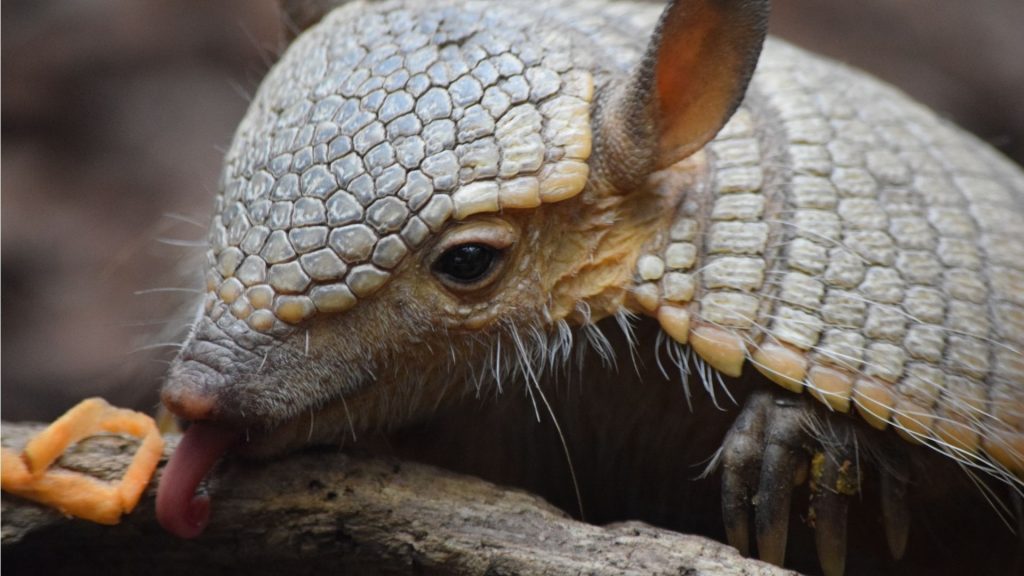

The study, “ Evidence of zoonotic leprosy in Pará, Brazilian Amazon, and risks associated with human contact or consumption of armadillos,” was published in PLOS Neglected Tropical Diseases.Īrmadillos have been shown to transmit M. The findings from this new research have implications for public health education programs related to these mammals and zoonotic transmission, or the spread of infection between animals and people.

leprae to humans by nine-banded armadillos in the southern United States.

Other researchers have previously documented transmission of M.
#ARMADILLO EAT SKIN#
Mycobacterium leprae can cause leprosy, a chronic disease characterized by lesions of the skin and nerve damage, in humans. Armadillos can be infected by an organism that is thought to be the human leprosy bacterium.An international team led by researchers at Colorado State University has found that human contact with wild armadillos - including eating the meat - has contributed to extremely high infection rates of a pathogen that can cause leprosy in Pará, Brazil. Some damage has bee caused by borrowing under foundations, driveways and other structures.ĭisease is another factor that must be considered when evaluating armadillo damage. Although armadillos occasionally destroy the nest of ground-nesting birds in their search for food, there is some disagreement as to whether they actually eat the eggs.Īlthough armadillos are beneficial because they eat insects and other invertebrates, they sometimes become a nuisance by digging in lawns, golf courses, vegetable gardens and flower beds. They may also feed on earthworms, scorpions, spiders and other invertebrates as well as on fruits and vegetable matter such as berries and tender roots. More than 90% of the armadillos diet is insect matter. Armadillos dig a number of burrows within an area to use for escape. Burrows are most commonly located in rock piles or around stumps, brush piles etc. Their burrows are usually 7 or 8 inches in diameter and up to 15 feet in length. In the winter they may be active only during the day.Īrmadillos are burrowing animals. They also are good swimmers and can walk across the bottom of small streams.Īrmadillos are active primarily from twilight hours through early morning hours in the summer. In spite of their cumbersome appearance, armadillos can run fast when in danger. The young are usually born in a nest within the burrow.Īrmadillos have poor eyesight, but a keen sense of smell. The gestation period is about 5 months and the young are always quadruplets of the same sex. Tracks made by an armadillo appear to have been made by a three-toed animal.Īrmadillos normally produce only one litter a year, usually in March or April. Its front feet are well adapted for digging. The armadillo is about the size of an opossum and weighs from 8 to 17 lbs. The underparts are covered with soft skin and a few long hairs.
#ARMADILLO EAT SERIES#
There are nine movable bands across the back, and the tail is covered with a series of overlapping rings. Instead the body is covered with a protective shell of bony armor. The armadillo is a rather interesting and unusual animal in that it does not have a body covering of hair or fur.


 0 kommentar(er)
0 kommentar(er)
